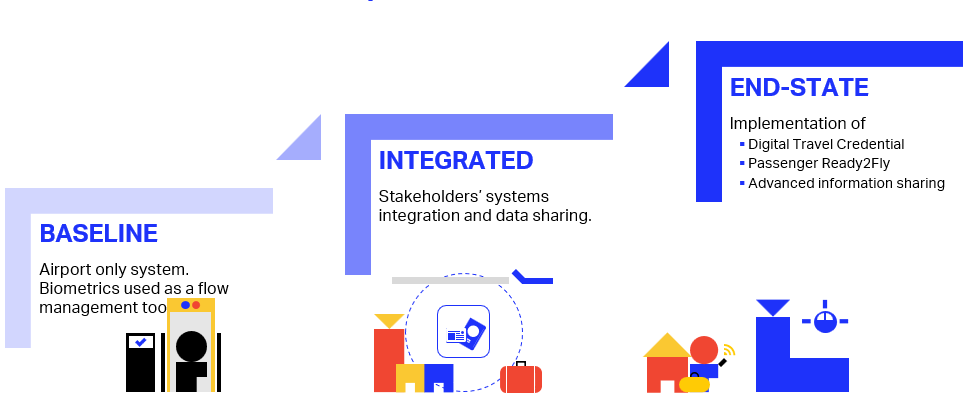The International Air Transport Association (IATA) today released a pivotal study demonstrating that replacing physical segregation barriers with biometric digital ID technology for international and domestic departing passengers can generate substantial cost savings, significant operational efficiencies, and major sustainability gains for the aviation sector.
The Domestic and International Passenger Integration Program (DIPIP) report, developed in collaboration with the engineering and project management firm AtkinsRéalis, provides a clear roadmap for modernization and integration.
“Regulatory requirements and technology limitations have long necessitated the physical separation of domestic and international passenger flows at many airports. That is no longer the case,” said Nick Careen, IATA’s Senior Vice President for Operations, Safety and Security. “Digital ID powered by biometrics can achieve the needed segregation without creating inefficient and costly duplicated facilities. This study makes a compelling case for modernization, showing that segregating passengers with digital ID leads to a better travel experience, reduces costs for airports and airlines, and maintains essential security and border control requirements.”
The study quantified significant benefits across the aviation ecosystem:
- Cost Savings: Shared facilities eliminate duplicated infrastructure, utilities, and staffing. Case studies identified potential savings of up to an 11% reduction in airport staff costs, while a major ground handler estimated an annual saving of $5.3 million at a leading international airport.
- Infrastructure Optimization: Removing physical barriers allows airports to serve more passengers within existing terminal footprints, optimizing space usage. A medium-sized airport serving 10 million passengers annually could save up to $80 million in future capital expenditure (CAPEX) by eliminating the need for duplicate facilities.
- Improved Passenger Experience: Simplified journeys and shorter processing times are predicted, including a reduction in minimum connection times by nearly 20%.
- Sustainability Gains: The consolidation of facilities reduces energy use and construction-related emissions. The medium-sized airport case study projected an annual reduction of 18,000 tonnes of carbon emissions, equivalent to removing 4,000 cars from the road for a year.
- Operational Flexibility: Shared spaces allow airlines and ground handlers to better manage fluctuating passenger volumes and deploy resources where they are most needed.
Gareth Vest, UK&I Aviation Market Director at AtkinsRéalis, commented, “The publication of this report is key in understanding how digital identity and the use of biometrics can play a significant role in improving passenger experience and creating substantial cost savings across the aviation sector. We were delighted to work on this study, drawing on our broad experience integrating biometrics into the passenger journey.”
The DIPIP report outlines a practical, three-stage roadmap for adoption—Baseline, Integrated, and End-State—which can begin within existing regulatory frameworks. The End-State envisions a fully digital process where travelers complete identity and travel checks remotely, creating a seamless, secure travel experience from home to gate.
“Collaboration is essential to unlocking the benefits of integrated passenger flows. Airports, airlines, and governments each have a role to play. By working together and progressively modernizing existing frameworks, we can deliver seamless, secure, and efficient travel for passengers while maintaining the highest standards of safety and compliance,” concluded Careen.




